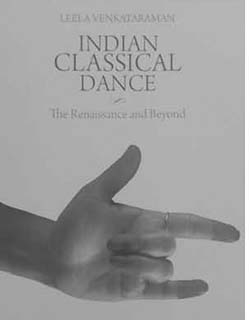Indian classical dance is rather a favourite subject of coffee table books for obvious reasons. The visual appeal and allure of the images lend itself to glossy books on the theme, of which there are many. Hastily put together primers also abound in the market. Of late, serious academic scholarship has had much to offer on the subject. Davesh Soneji, Avanti Meduri, Priya Srinivasan, and many others have contributed a great deal through their academic writing in the form of books and scholarly papers. What sets this genre of work apart is of course the highly nuanced and contextualized analysis of Indian dance, and its attempt to place dance in a secular, socioeconomic context, in sharp contrast with the religious and mythological context of the earlier works.
The story of Indian Classical Dance is by now very familiar— moving as it did from temples, to courts and the modern stage. In this journey, dance has served many purposes, the latest of which has been to legitimize and add value to the nationalist aspirations of a modernizing elite in post-Independence India. The same elite in its diasporic avatar, has taken with it Indian classical dance and has often employed it to convey a particular image of itself, in the new setting that it is located in. It has become a significant marker of ‘Indian culture’, and is deployed strategically by the state to create a certain kind of culture capital in the terrain of soft power.
Many books have covered the history of the ‘revival’ of Indian classical dance, which in itself is a complicated and contested one. The almost unbelievable accounts of how visionaries like Rukmini Devi Arundale, Vallathol Narayana Menon, Rabindranth Tagore and others spotted the genius in the dance traditions of the subcontinent and then attempted to institutionalize the teaching and learning of these art forms has been recounted often. The search for teachers and scholars who were lost in oblivion and their rehabilitation is a thrilling story in itself.
The politics of this careful culling out and the creation of new practices is now the subject of many scholarly writings on Indian dance. In this context, Leela Venkataraman’s book Indian Classical Dance: The Renaissance and Beyond focuses on yet another dimension. As the title suggests, the book is attempting to move beyond the story of ‘revival’ of Indian classical dance. The author is well known and respected as a critic who appreciates the multiple challenges that Indian classical dance encounters in a furiously globalizing world. Her knowledge of diverse dance traditions, fluency with the language and understanding of the literary roots of some of the major classical dance styles are all factors that prompt us to take this book very seriously.
Continue reading this review

